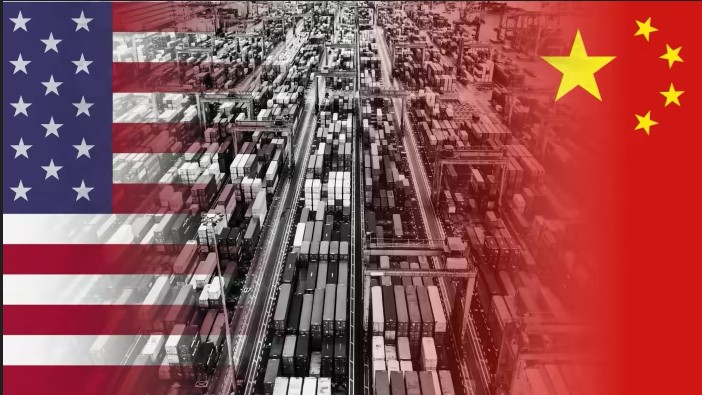The Chinese economy is slowing. China’s GDP growth is expected to be less than 5% this year, down from last year’s prediction and considerably below the late 2010s strong growth rates. The West reports China’s claimed misdeeds: a real-estate market catastrophe, a debt overhang, and more. Much of the slowdown is due to US initiatives to restrict China’s growth. US policies violate WTO standards and threaten global prosperity.

China’s trade surplus with the United States has widened during the pandemic. Illustration: iStock (Source: Asia Times)
US-China Economic Cold War
The anti-China measures are typical of US policy. The goal is to stop a big competitor from competing economically and technologically. The US technological blockade of the USSR during the Cold War was the first and most prominent use of this tactic. The US declared war on the Soviet Union and blocked Soviet access to breakthrough technologies.
The second playbook application is less evident and sometimes neglected by experts. In the late 1980s and early 1990s, the US tried to limit Japan’s economic. This is odd as development Japan is a US ally. Japan was becoming “too successful,” outperforming the US in semiconductors, consumer electronics, and vehicles. Japanese achievement was lauded in books like Japan as Number One by my late, wonderful colleague, Harvard Professor Ezra Vogel.
US lawmakers blocked US markets to Japan’s exports through “voluntary” restraints in the mid-1980s, forcing Japan to overvalue its currency. The Japanese currency rose from ¥240 per US dollar in 1985 to ¥128 in 1988 and ¥94 in 1995, driving Japanese goods out of the US market. Japan slumped as exports fell. Japan’s exports climbed 7.9% yearly from 1980 to 1985, 3.5 percent from 1985 to 1990, and 3.3 percent from 1990 to 1995. In the early 1990s, numerous Japanese enterprises went bankrupt as expansion stalled.
A top Japanese official in the mid-1990s was asked why Japan didn’t lower the currency to boost growth. He replied that the US would not allow it. The US targets China. Starting in 2015, US politicians viewed China as a threat. China’s economic development caused this change. A 2015 “Made in China 2025” policy to improve robots, digital technology, renewable energy, and other advanced technologies frightened US strategists over China’s economic development. At the same time, China unveiled its Belt and Road Initiative to build infrastructure in Asia, Africa, and other regions using Chinese funds, firms, and technologies.
US-China Economic War Development
The US revived its strategy to restrict China’s growth. Former US president Barack Obama suggested a new trading club with Asian countries that excluded China, while presidential contender Donald Trump promised full protection. Trump slapped unilateral tariffs on China that breached WTO regulations after winning the 2016 election on an anti-China agenda. The US blocked fresh nominations to the WTO appellate court to prevent WTO rulings against US initiatives. The Trump administration has banned ZTE and Huawei devices and urged allies to do similarly.
Most people, expected Joe Biden to soften Trump’s anti-China views. The reverse occurred. Biden maintained Trump’s tariffs on China and signed additional executive orders to restrict China’s access to sophisticated semiconductor technologies and US investments. Instead of offshoring, US companies were advised to “friend-shoring” their supply chains from China to other countries. The US disregarded WTO rules in these actions.
The US denies an economic war with China, but if it looks, swims, and quacks like a duck, it is. Washington politicians are adopting a similar script and military vocabulary to proclaim China an enemy that must be vanquished. This reverses China’s exports to the US. Trump took office in January 2017, and China accounted for 22% of US merchandise imports. China’s share of US imports declined to 19% by January 2021, when Biden became office. As of June 2023, China imports only 13% of US goods. US imports from China declined 29% between June 2022 and June 2023.
However, China’s economic development behavior is complicated and not driven by China-US trade. Chinese exports to the US may recover. Biden is unlikely to remove trade barriers with China before the 2020 US election. China can navigate around US protectionism, unlike Japan in the 1990s, which relied on the US for security and obeyed US demands. Most crucially, developing the Belt and Road Initiative can boost China’s exports to Asia, Africa, and Latin America. In principle, the US endeavor to limit China is incorrect, but it will fail in practice. China will partner with the global economy to expand commerce and technology.

















































